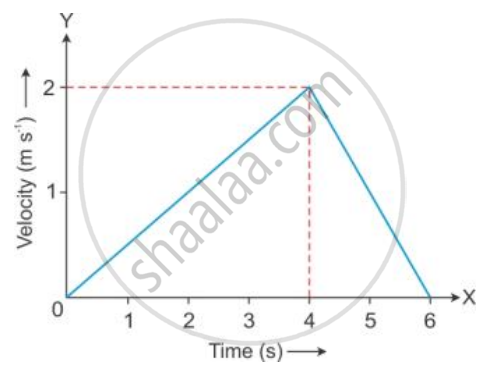Advertisements
Advertisements
प्रश्न
A bird sitting on a wire, flies, circles around and comes back to its perch. Explain the total distance it traversed during its flight and its eventual displacement.
उत्तर
The total distance travelled by the bird during its flight = 2×(Distance between the point where the bird was sitting and the point from where it takes a turn)
The eventual displacement of the bird is zero as it returns to its initial point, i.e., where it was sitting.
संबंधित प्रश्न
What information about the motion of a body are obtained from the displacement-time graph?
What can you say about the nature of motion of a body if its displacement-time graph is A curve.
Figure shows the velocity-time graph of a particle moving in a straight line.

(i) State the nature of motion of particle.
(ii) Find the displacement of particle at t = 6 s.
(iii) Does the particle change its direction of motion?
(iv) Compare the distance travelled by the particle from 0 to 4 s and from 4 s to 6 s.
(v) Find the acceleration from 0 to 4 s and retardation from 4 s to 6 s.
A racehorse runs straight towards the north and covers 540 m in one minute. Calculate
- displacement of the horse,
- its velocity in (a) ms−1 (b) kmh−1.
A motorbike running at 90 kmh−1, is slowed down to 54 kmh−1 by the application of brakes, over a distance of 40 m. If the brakes are applied with the same force, calculate
- total time in which bike comes to rest
- total distance travelled by bike.
A particle moves along a circular path. How many times does it change its direction in two complete rounds?
Displacement / Time : Velocity :: Speed / Time : ______.
______ is the length of the actual path covered by a body.
Give some examples for vector quantity.
A quantity that has both magnitude and direction is ______.
